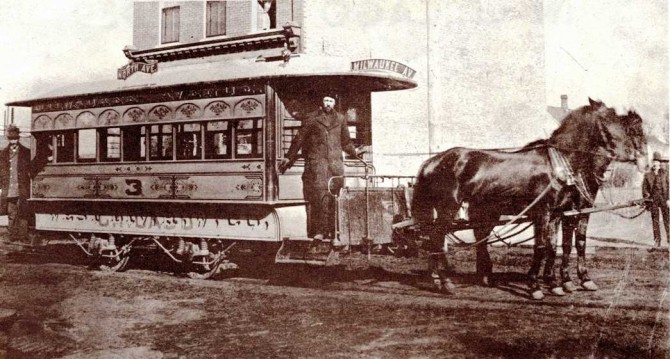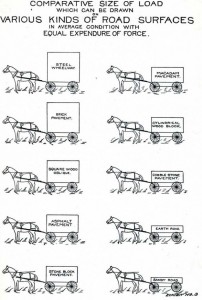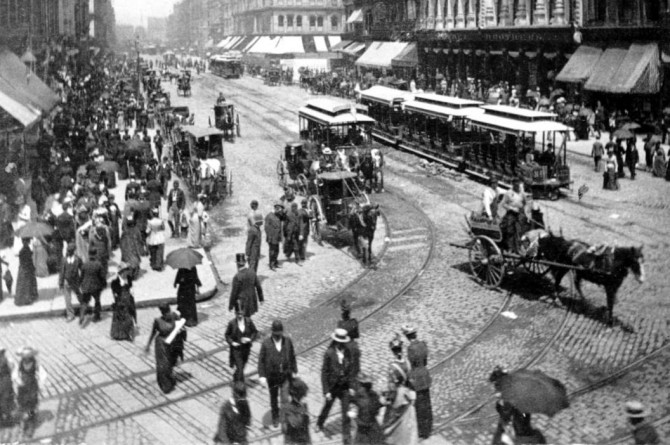Although an exact number is elusive, the street railways used thousands of horses. Anne Greene reported that the West Chicago Railways Company alone used 4,000 horses.
Chicago’s first street railway opened in 1859. Mayor Haines commented that “Horse railroads… give the poor man a home in the outskirts of the city, at the same time that they bring him near to the place in which he earns the means to support his family.”
Horse-drawn omnibuses existed before 1859, but they were expensive. The street railways were cheaper, because horses could draw many more passengers on steel rails.
A route-by-route account of the system is given in CTA Historical Information: 1859-1965. Aside from a few experiments with steam and compressed air, street railways were drawn exclusively by horses from 1859 to 1882. Starting in 1882 the system largely switched over to cable car operation such as is used in San Francisco.
Horses were used at night when it was uneconomical to run the cable. At least one route, the South Chicago route, used horses exclusively until 1902.
Between 1890 and 1906, the system switched from cable to electric operation eliminating the need for the horse-drawn night shift after 1906. Horses were kept for emergencies.
Electric street cars were replaced by motor buses in the 1950s. Many Chicago Transit Authority bus routes are unchanged in both name and route from the horse railroad days.





Add a comment to: Horse-Drawn Street Railways: Technology That Changed Chicago